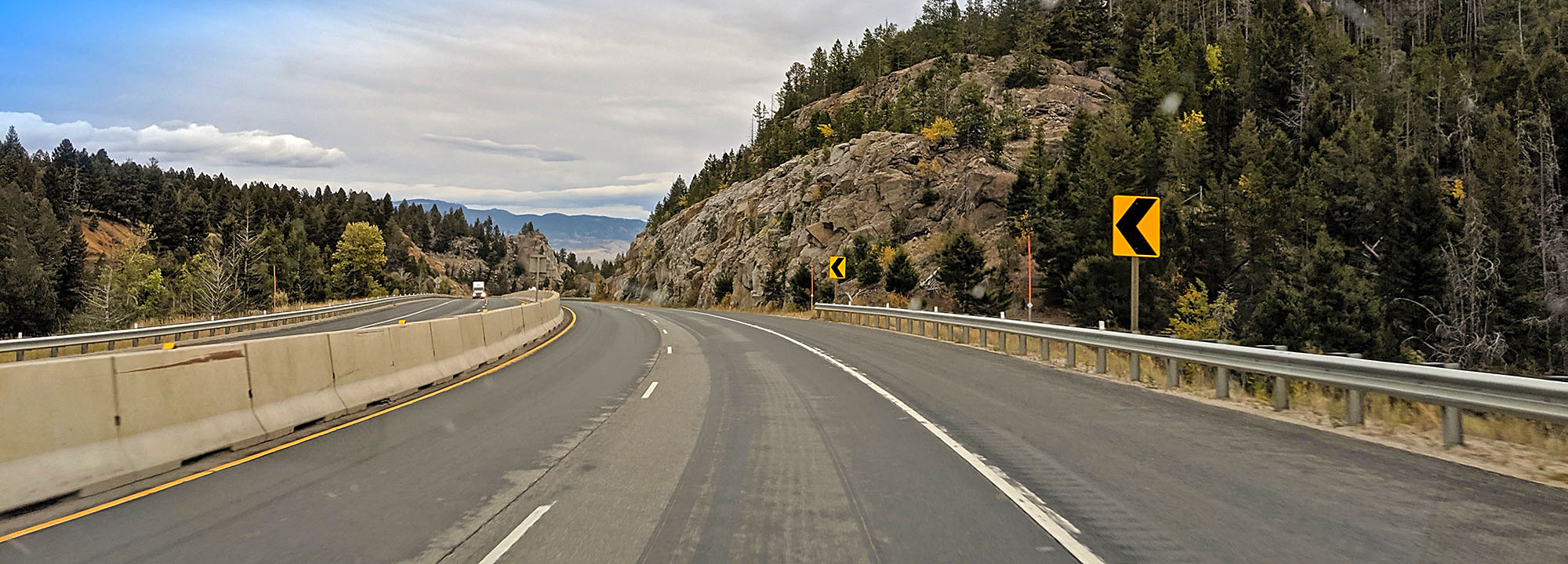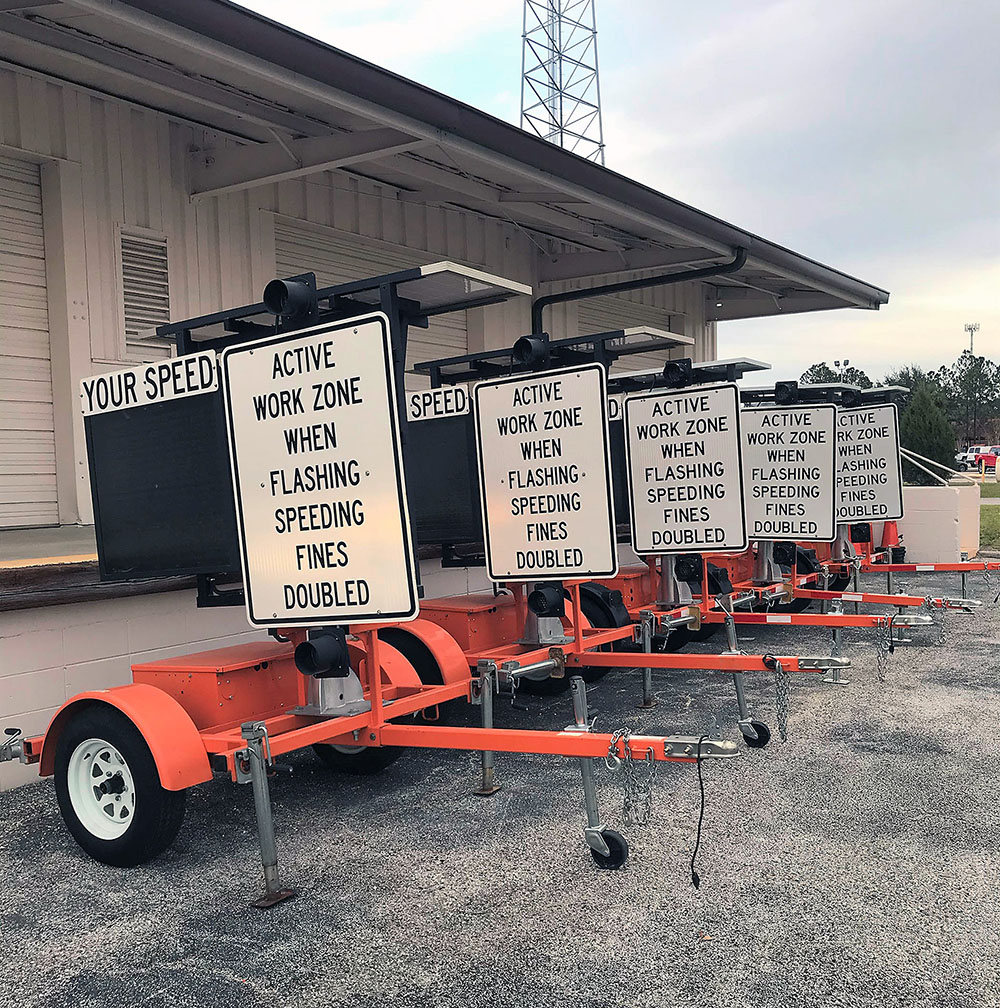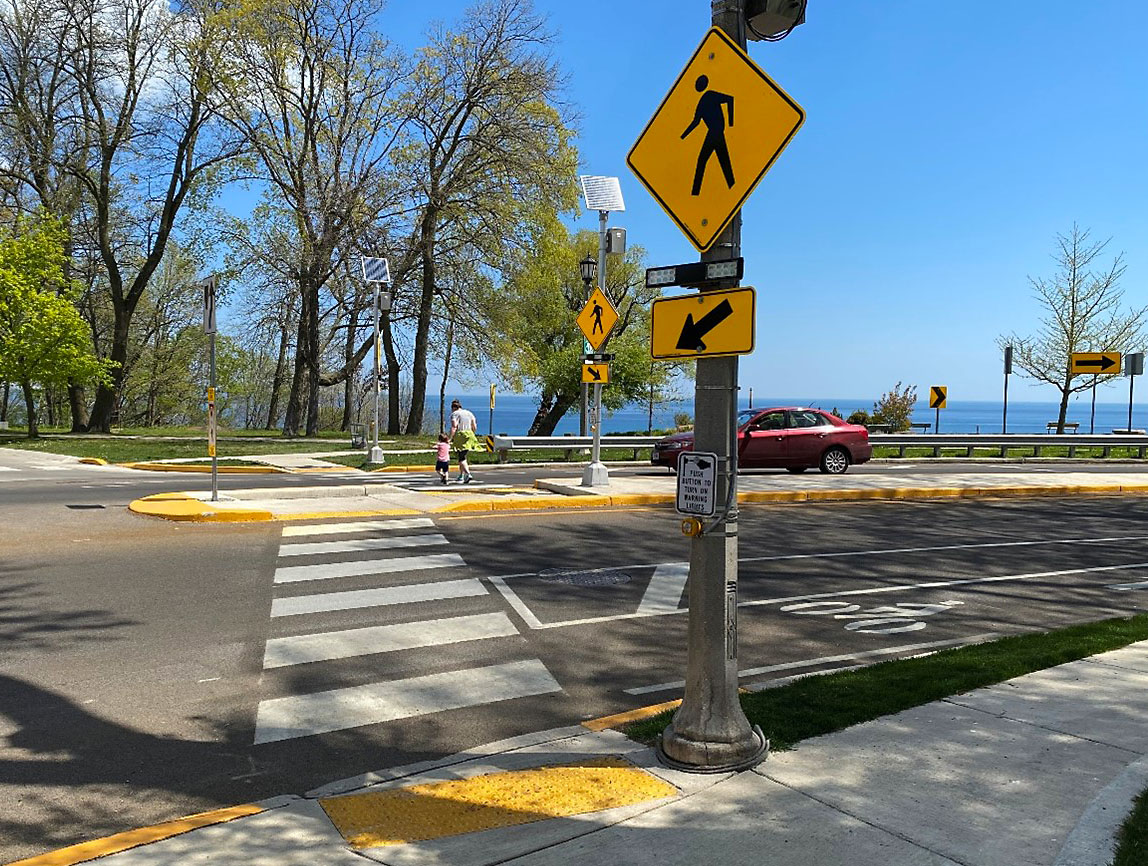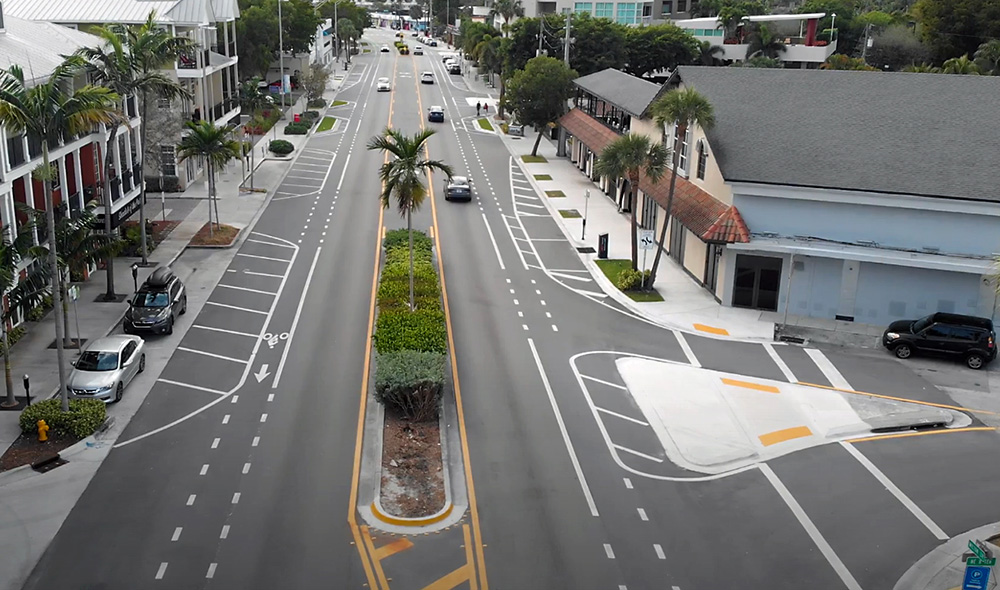
National Safety Awards Spotlight EDC Innovations
The FHWA Every Day Counts (EDC) program promotes roadway innovations that are proven to work. It is no surprise, then, that the 2021 National Roadway Safety Awards featured many EDC offerings. Five EDC innovations were featured in six of the seven winning projects and one of the three honorable mentions.
The winning projects range from small towns to State departments of transportation (DOTs), from analytic tools to on-the-ground countermeasures.
Arterial Work Zone Safety
In Florida, speeding in work zone areas accounts for 31 percent of fatal work zone crashes. To help solve this deadly problem, the Florida DOT worked with the University of South Florida Center for Urban Transportation Research to evaluate smart work zone technologies (SWZ) on arterials.

FDOT installed Active Work Zone Awareness Devices on portable trailers for deployment to work zones.
Credit: Florida Department of TransportationThe researchers studied several countermeasures, including Active Work Zone Awareness Devices (AWAD)—dynamic signs that warn approaching drivers of work zones. The study showed that using AWADs increased safe driving behavior by 39 percent and reduced risky driving by 34 percent.
Long-Life Pavement Markings Safety Initiative
Lane departure crashes caused 55 percent of fatal and serious injury collisions in North Carolina between 2015 and 2019, according to the Roadway Safety Foundation. To combat this trend, the North Carolina DOT (NCDOT) evaluated long-life pavement markings, one of the countermeasures promoted by EDC’s Focus on Reducing Rural Roadway Departures (FoRRRwD) team.
All types of long-life markings tested demonstrated crash reductions: Across all sites treated with the countermeasure (over 400 miles of roadway), NCDOT found a 13-percent reduction in lane departure crashes using standard markings and a 19-percent reduction when using wider 6-inch markings.
Community-Wide Safety Improvements
The village of Whitefish Bay, WI, saw a trend of increasing crashes since 2010, including many involving non-motorists. The village took a two-phased approach to address this safety problem.

Whitefish Bay, WI, implemented STEP countermeasures such as rectangular rapid flashing beacons and high-visibility crosswalks.
Credit: Village of Whitefish Bay, WIFirst, they implemented low-cost, quickly deployed treatments like dynamic speed feedback signs to increase driver awareness of pedestrians and bicyclists. Longer-term solutions included several EDC innovations such as high-friction surface treatment and multiple pedestrian safety countermeasures promoted by EDC’s Safe Transportation for Every Pedestrian (STEP) team.
The village also used a systemic approach to evaluate solutions, a method promoted by the EDC data-driven safety analysis (DDSA) and FoRRRwD teams. Since 2015, crashes in Whitefish Bay have been reduced 39 percent.
Video Analytics Toward Vision Zero Program
The city of Bellevue, WA, also used a systemic approach and DDSA techniques to be proactive about implementing safety solutions. Bellevue employed sophisticated traffic conflict analysis that uses cloud computing, artificial intelligence, and video analytics to predict conflicts so agencies can respond before crashes happen. The effort has been so successful that, in 2021, the city began applying these safety techniques to its high-injury network corridors and integrating conflict analytics into road safety assessments.

Aerial view of Wilton Drive showing on-street parking, buffered bike lanes, median separation, and pedestrian facilities.
Credit: Broward Metropolitan Planning OrganizationComplete Streets Master Plan and Wilton Drive Improvements
The South Florida Region that includes Broward County has the highest number of total pedestrian fatalities in the Nation (1,675 from 2010 through 2019). A particularly difficult location was the Wilton Drive corridor.
The Broward Metropolitan Planning Organization (MPO), as part of its Broward Complete Streets Master Plan, integrated several STEP approaches and countermeasures to accommodate all road users. The results include a 66-percent decrease in bicycle and pedestrian crashes, a 75-percent reduction in severe-injury and fatal crashes, and a roughly 50-percent improvement in travel times along the corridor, according to the MPO.
TxDOT Safety Scoring Tool
The Texas DOT (TxDOT) and Texas A&M Transportation Institute developed a scoring tool to evaluate the safety effectiveness of design elements on projects. This lets TxDOT predict the safety outcomes of design decisions and allows safety considerations to be considered early in a project’s development and design stages.
This tool, which incorporates predictive techniques from the AASHTO Highway Safety Manual, is a great example of the DDSA approach.

Wider shoulders and edge line rumble strips were among the improvements the Montana DOT added to Highway 89. The photo shows the old (top) and new (bottom) alignments for one of 21 curves that were reconstructed.
Credit: Montana Department of TransportationHonorable Mention: North of Kiowa North
U.S. Highway 89 west of Browning, MT, was built in 1927 and is a main entrance to Glacier National Park. The road was narrow with sharp curves and heavy tourist traffic. It also crosses many cultural sites of the Blackfeet Nation Reservation.
The Montana DOT improved a 5.8-mile stretch of U.S. 89, implementing multiple countermeasures highlighted in the FoRRRwD initiative such as wider shoulders and edge line rumble strips.
—MORE INFORMATION
Read the National Roadway Safety Awards 2021 Noteworthy Practices Guide for details on the winning projects.
Watch U.S. Transportation Secretary Pete Buttigieg announce the winners in a congratulatory video.
Notice: The U.S. Government does not endorse products or manufacturers. Trademarks or manufacturers’ names appear in this article only because they are considered essential to the objective of the document.
Recommended Citation: U.S. Department of Transportation, Federal Highway Administration - Washington, DC (2022) Innovator Newsletter, March/April 2022, Volume 15 (89). https://doi.org/10.21949/1521807



